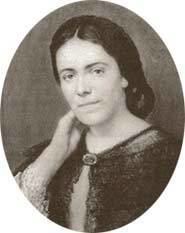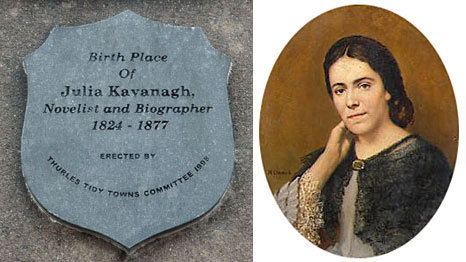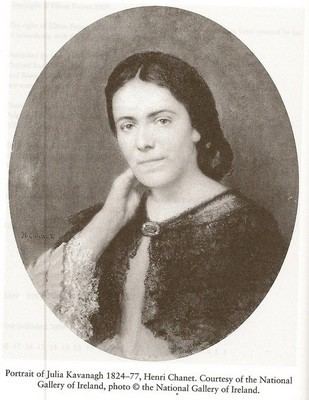Name Julia Kavanagh Role Novelist | Parents Morgan Kavanagh | |
 | ||
Died October 28, 1877, Nice, France Books Daisy Burns, Women Of Christianity - Exemplar, English Women of Letters: Bi, Madeleine, A summer and winter in the Tw | ||
Baby julia kavanagh 3 months old
Julia Kavanagh (7 January 1824 – 28 October 1877) was an Irish novelist, born at Thurles in Tipperary, Ireland—then part of the United Kingdom of Great Britain and Ireland.
Contents

Biography

She was the daughter of Morgan Kavanagh (died 1874), author of various philological works and some poems, and Bridget Kavanagh (née Fitzpatrick). Julia spent several years of her early life with her parents in Paris, laying there the foundation of a mastery of the French language and insight into French modes of thought, which was perfected by her later frequent and long residences in France.
Kavanagh's literary career began after the move of her and her mother to London in about 1844, after separating from her father in France. Thereafter she supported herself and her invalid mother, Bridget (a lifelong companion), with her writing career. Her first book was Three Paths (1847), a story for the young; but her first work to attract notice was Madeleine, a Tale of Auvergne (1848), a story of “heroic charity and living faith founded on fact.”
Julia and her mother were again living in Paris from the early 1860s, but moved to Rouen and then to Nice on the outbreak of the Franco-Prussian War. Julia died in Nice in 1877, unmarried and a devout Catholic. Her last words, in French, were: “Oh Mama! how silly I am to have fallen.”. Bridget continued to live in Nice until her death in 1888. In 1884 she donated a painting of Julia by Henri Chanet to the National Gallery of Ireland.
Works
The scenes of Kavanagh's stories are almost always laid in France. Her style is domestic, simple and pleasing, aimed at younger woman readers; her main characters tend to be strong independent and resourceful women. She was popular and had a loyal readership. She was also a prolific contributor to periodical literature, and also wrote many biographical sketches. Modern scholars see a pronounced awareness of gender politics in Kavanagh's writing and view her as a writer whose works consciously exposed the anomalies of social and sexual difference while still adhering to the conventions of the time.
Her works include:
